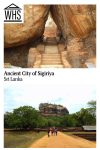Ancient City of Sigiriya
By Tim
What is the Ancient City of Sigiriya?
Sigiriya, or “Lion Rock”, is one of the most famous sites in Sri Lanka. It’s a huge rock that rises about 200 metres out of flat countryside, standing over the surrounding jungle. On top of it are the remains of a former capital city, built in the 5th century by King Kashyapa, and his palace. It was abandoned when he died, then became a Buddhist monastery until the 14th century.
Around the base you’ll find landscaped gardens, moats and water gardens that are well-preserved. As you climb up the rock you’ll find frescoes painted onto the rock, a mirror wall that once reflected like glass, and the famous lion’s paws carved into the stone, which once formed the entrance to the fortress.
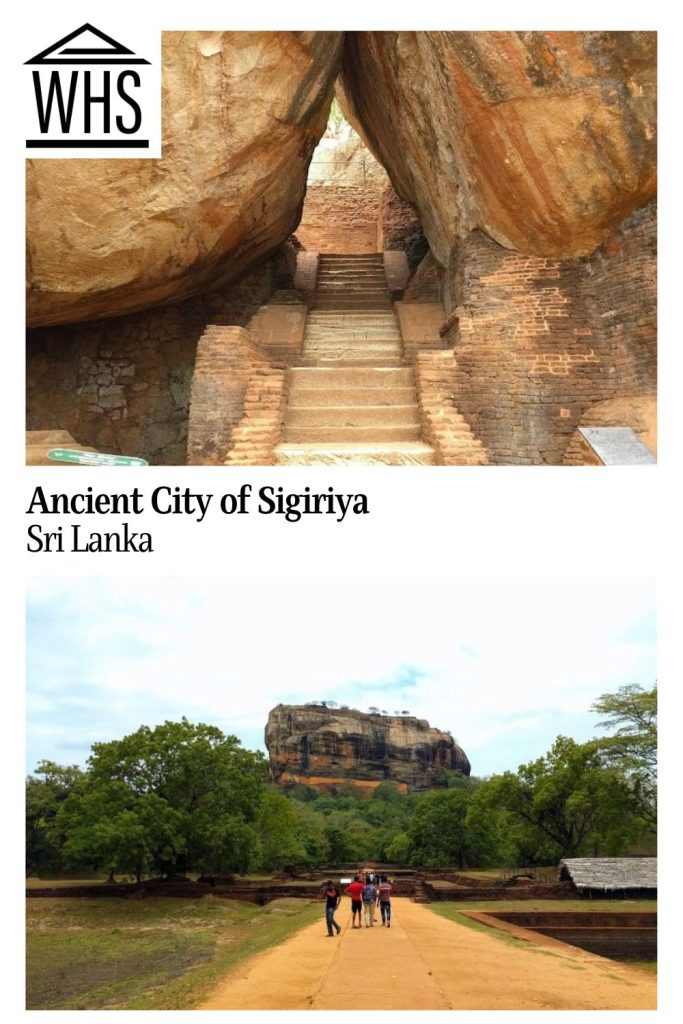
On the top there are the foundations of the former capital and palace, and beautiful views across the countryside.
Disclosure: This article contains affiliate links. Making a purchase through an affiliate link will mean a small commission for this website. This will not affect your price. Privacy policy.
Why is the Ancient City of Sigiriya a UNESCO World Heritage site?
Sigiriya has been on the UNESCO list since 1982, mainly because it’s a good example of ancient urban planning, along with its art and architecture. The layout of the gardens, the engineering that went into the water systems, and the way the rock was transformed into a fortress-palace all count as unique achievements. Inscriptions on the rock are some of the oldest writing in Sinhalese and the rock paintings called the “Maidens of the Clouds,” on a wall halfway up the rock, are the first examples of a style that continued for centuries afterwards.
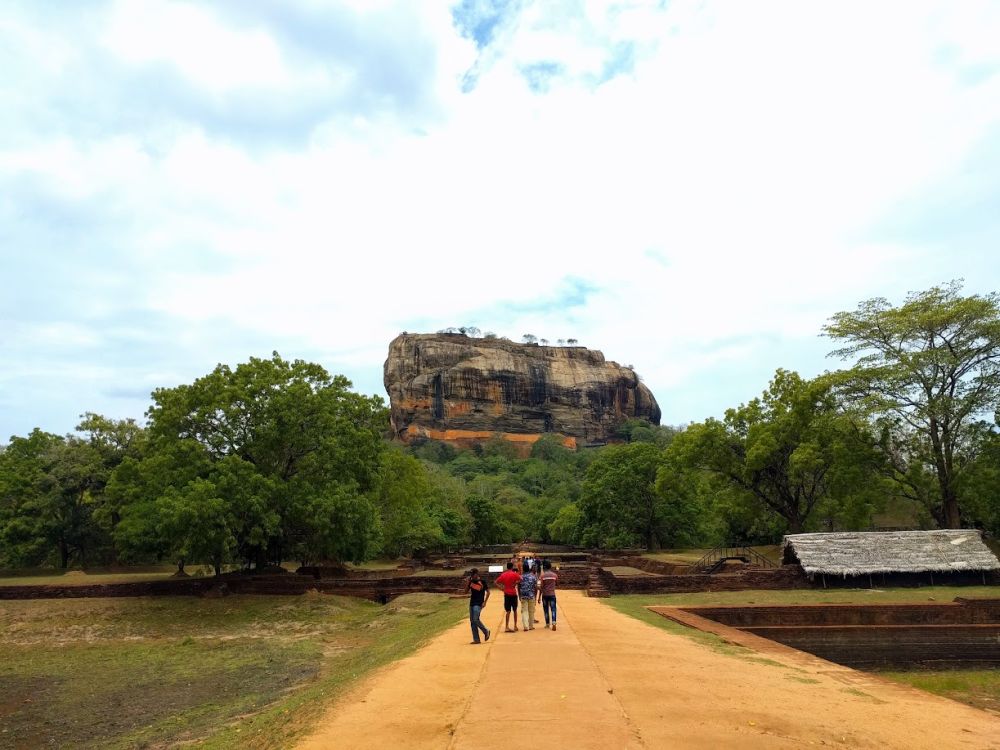
What can you expect on a visit to Sigiriya?
The visit usually starts with the gardens in what was a wealthy residential part of the city. You’ll walk past moats and water channels, set amongst the surrounding jungle. If you go in the morning when the air is cooler, it’s quite peaceful. It sets the scene for the climb to the palace/fortress, and you start to get a sense of how organised and advanced the design was.
The climb itself is a mix of stone staircases and metal steps bolted onto the rock. It isn’t dangerous, but it’s steep in places, so you’ll want decent shoes. About halfway up are the frescoes – paintings of women, often called “cloud maidens.” The artworks have survived for more than 1,500 years, which is impressive in itself. Right after that is the mirror wall, which is covered in graffiti from visitors dating back more than a thousand years.
The lion’s paws are probably the highlight before you reach the top. They’re huge and very impressive, even if the rest of the lion statue didn’t survive.
From there, it’s the last push to the summit, where you’ll find the palace ruins. There isn’t much left apart from foundations, but the views are the main reason to be up there. You can see miles of jungle, lakes and small villages in every direction.
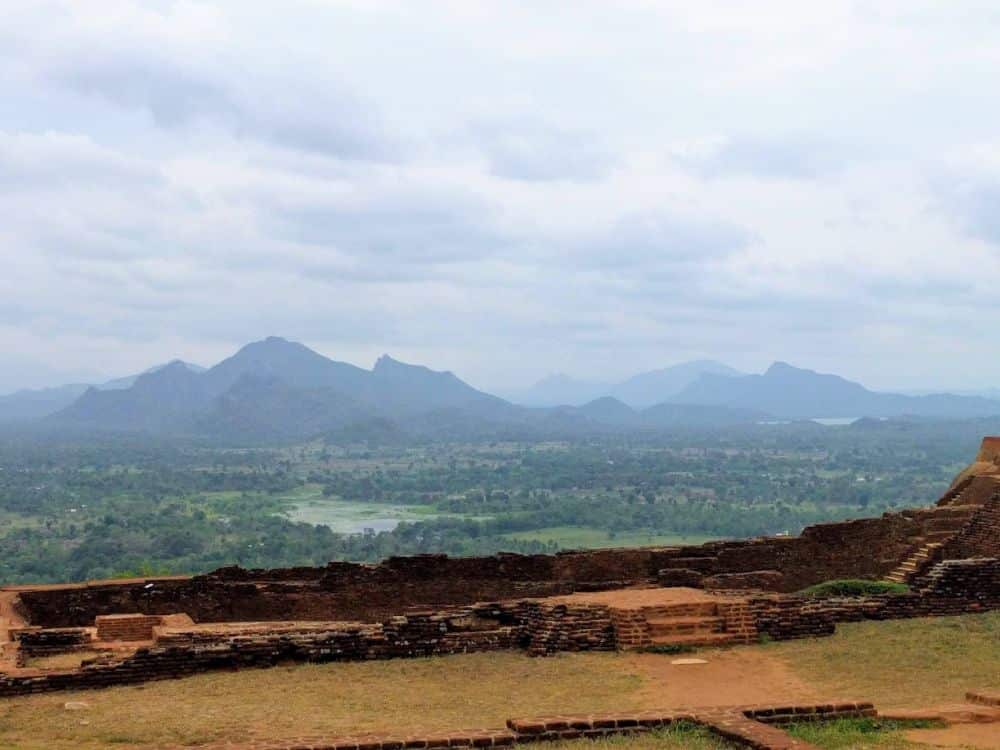
Is Sigiriya worth visiting?
Yes, it’s definitely worth it. The rock alone is impressive to look at, and the ruins and views add to it.
It’s part of the cultural triangle of Dambulla, Anuradhapura and Polonnaruwa. Most travellers tend to do one of a few loops around Sri Lanka, and Sigiriya is a stop on many of them.
What sorts of travelers would like Sigiriya?
Sigiriya is a blend of a few things so it would suit a few types – anyone interested in ancient ruins, the history of Sri Lanka, nature, hiking or ancient art.
Tips for visiting Sigiriya
Allow about three hours for the visit. That gives you time to see the gardens, climb at a steady pace, and spend a bit of time at the top.
The hike up is somewhat strenuous so it may not be suitable for people with mobility issues or who may not be fit enough. Sigiriya is not wheelchair accessible. This tuk-tuk tour is intended for those who don’t want to or can’t climb the rock, taking you to viewpoints around it instead.
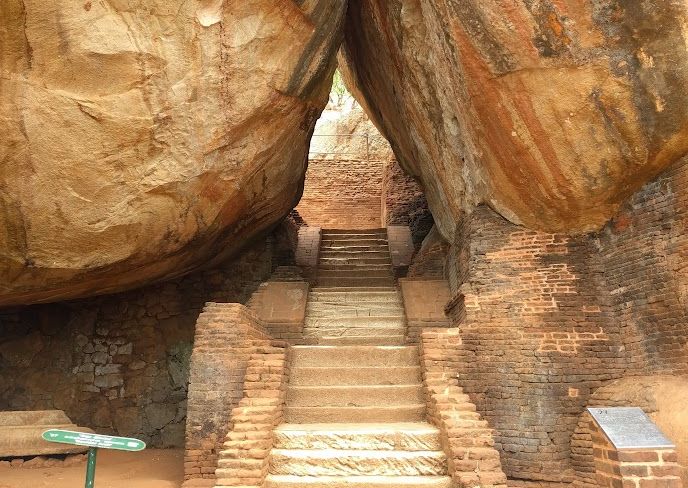
The climb is exposed, so go early to avoid the heat and the big crowds. Bring plenty of water and wear shoes with a good grip. The metal staircases can feel narrow when busy, but it’s manageable if you’re patient.
Avoid the busiest tourist season (December-March and July-August), and go on a weekday rather than a weekend. Avoid visiting during local holidays as well.
You can also combine Sigiriya with Dambulla Cave Temple, which is about 30 minutes away by car. If you’re planning a couple of days in the cultural triangle, it fits easily into an itinerary. Compare rental car prices here.
Consider taking a guided walking tour of Sigiriya. If you need transportation, you can take a guided day tour that leaves from Kandy and includes both Sigiriya and Dambulla. This guided tour from Colombo includes both as well.
If you want a cheaper and less crowded alternative, Pidurangala Rock nearby is a good option. It doesn’t have the palace ruins, but the view of Sigiriya from the top is excellent. Many people do both.
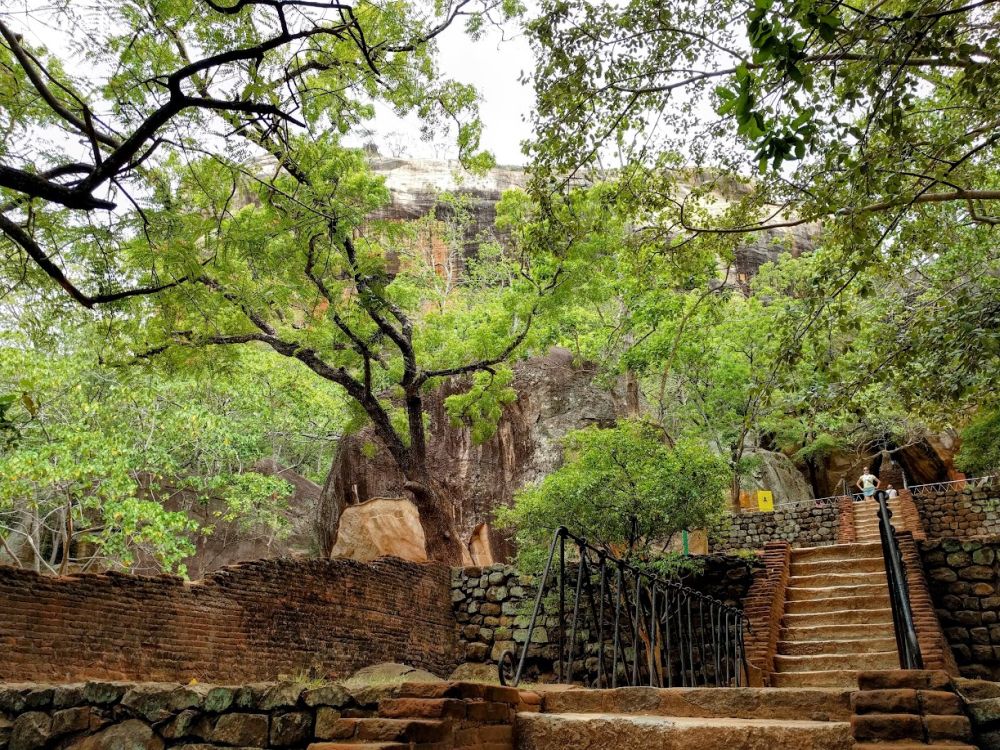
Where is the Ancient City of Sigiriya?
Sigiriya is in central Sri Lanka, about 15km (9.3mi) northeast of Dambulla.
By car, it’s roughly 30 minutes from Dambulla and around 2.5 hours from Kandy. Parking is available at the site but expect to pay a small fee.
Book accommodations near Sigiriya or in Kandy.
By public transport, the easiest way is to take a bus from Dambulla to Sigiriya village, which takes about 45 minutes. From there, you can walk or take a tuk-tuk to the main entrance.
For more information about Sigiriya, its opening hours and admission fees, see its official website.
Have you been to the Ancient City of Sigiriya? If so, do you have any additional information or advice about this UNESCO World Heritage site? Please add your comments below!

